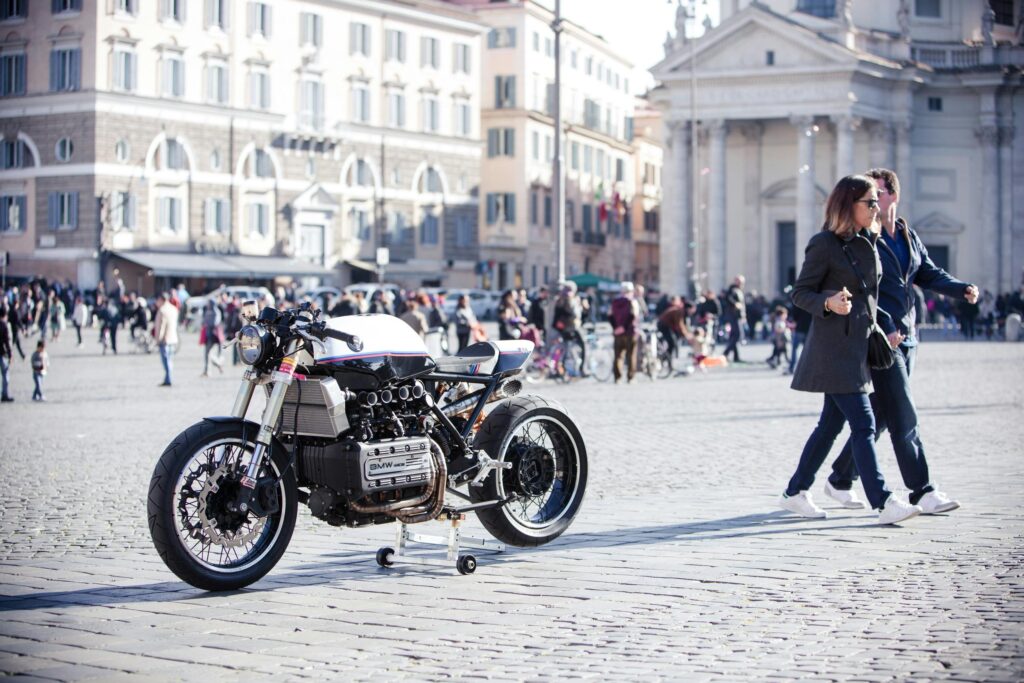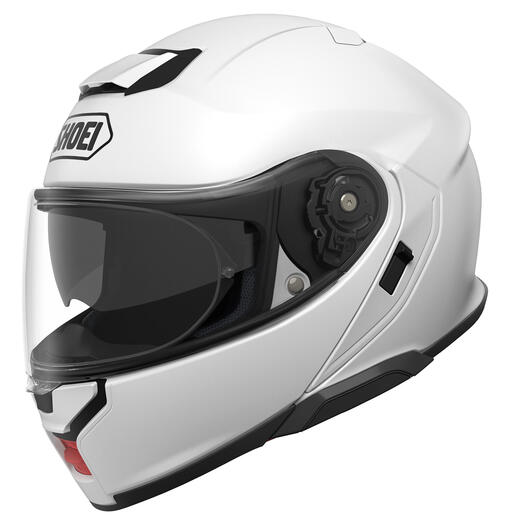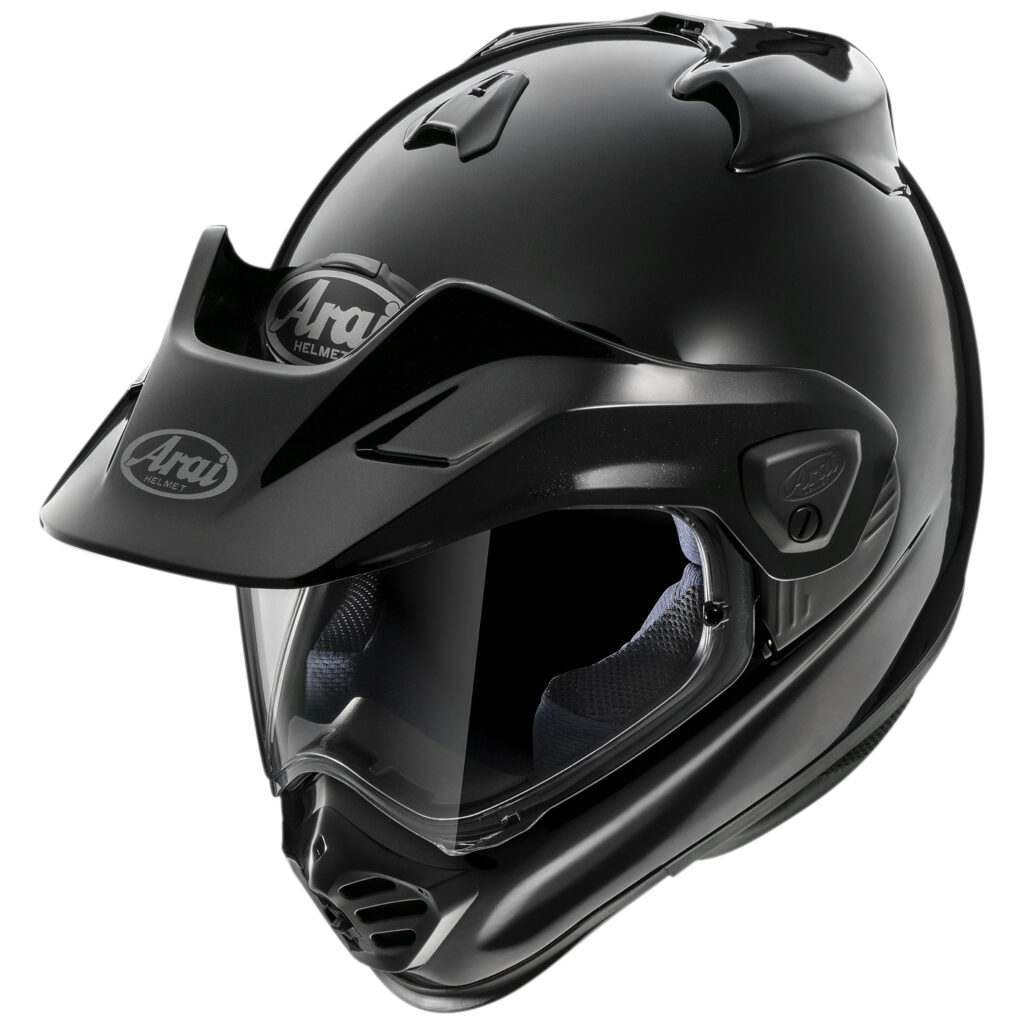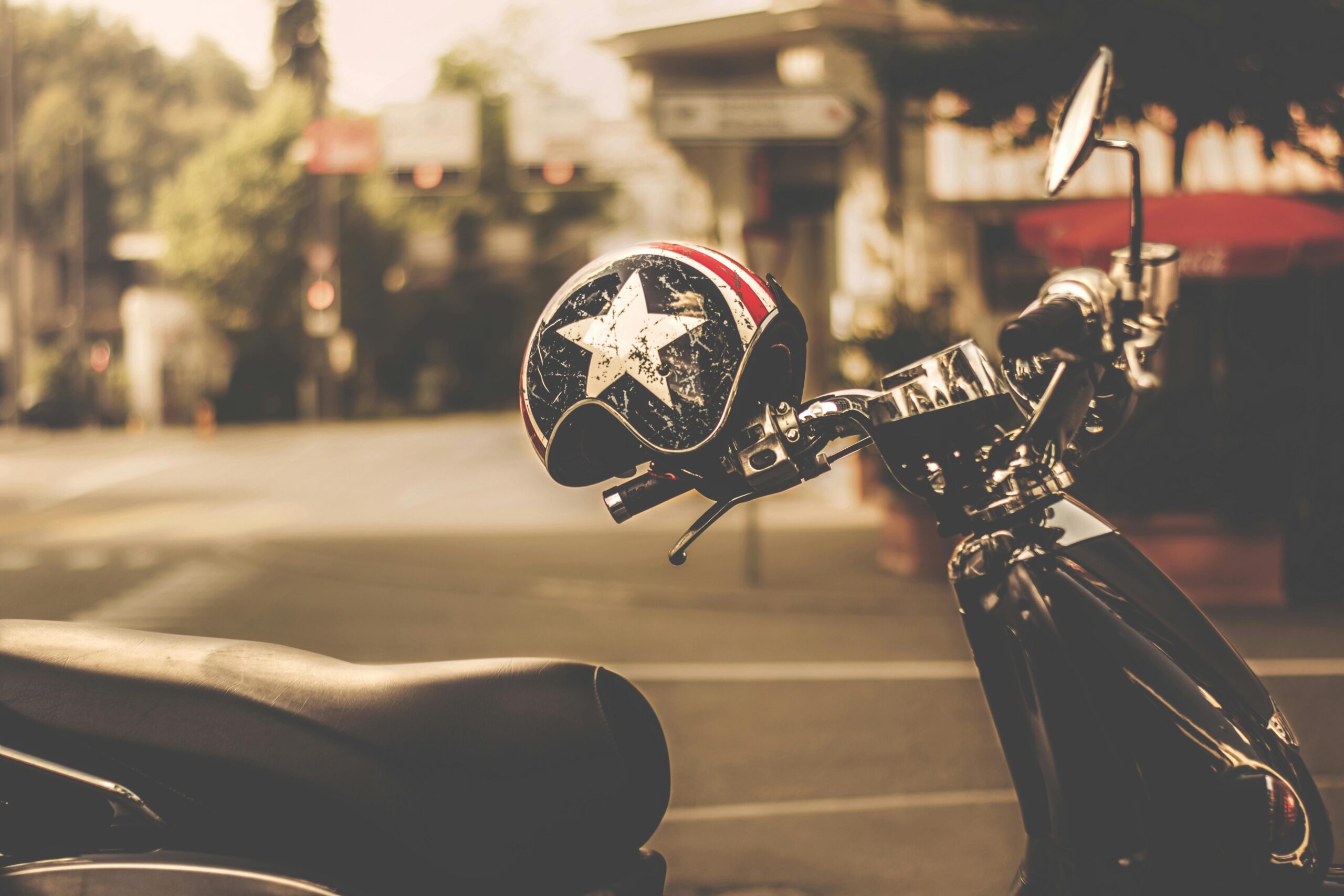If you’ve ever ended a ride with a pounding headache or ringing ears, you know just how important a good helmet is. According to a 2023 study by the Motorcycle Industry Council, over 70% of touring riders say helmet comfort plays a major role in how much they enjoy their trips. Having the best motorcycle helmet for travel is not just about comfort, it’s about protection, noise reduction and having a piece of gear you can trust, both at home and away.
While choosing the right helmet is important for any ride, it becomes absolutely non-negotiable when you’re travelling. Helmets aren’t easily replaceable items, especially when in a foreign country; they’re costly, not always available in sizing, quality and trusted brands, and rental options are usually a “one size fits no one” to avoid legalities. Being stuck with an ill-fitting or poor-quality helmet can be both miserable and dangerous – particularly if you’re covering long distances across unfamiliar terrain and climates.
To help you find your best motorcycle helmet for travel, this article helps narrow your search to a few high-quality options before you even set foot in a store. While I haven’t personally tried every helmet listed here, I have consulted numerous rider reviews, long-haul touring forums and expert breakdowns from experienced gear testers. When it comes to motorcycle travel, preparation isn’t just wise – it’s essential. Protecting your brain may be the most essential item there is.
Keep reading to find out what the best motorcycle helmet for travel in 2025 might be for you.


What Makes a Motorcycle Helmet Great for Travel?
Long-distance touring or sightseeing over multiple days demands more from a helmet than the average weekend ride. These are the factors that consistently make a difference when considering the best motorcycle helmet for travel:
- Weight vs. Protection: A lighter helmet will reduce fatigue, a sore neck or associated migraines, especially if worn for hours on the road. Look for materials like carbon fiber or advanced composites that adhere to safety standards without the bulk.
- Ventilation: Effective airflow can dramatically improve comfort. A travel-ready helmet should balance airflow with noise control.
- Interior Comfort: The padding should feel firm yet supportive. Moisture-wicking liners are a plus for extended use, especially in hot climates.
- Noise Management: Excess wind noise leads to fatigue over time. Well-insulated helmets can improve focus and endurance, particularly in the late afternoon when riders are more susceptible to micro-sleeps.
- Helmet Type: Modular helmets offer versatility, full-face designs typically excel in protection and aerodynamics, and ADV helmets suit riders navigating mixed terrain. Before going on a trip, take some time to note which of these options would be most beneficial to you, e.g. outback Mongolia and the French countryside can be quite different.
- Safety Certifications: DOT, ECE 22.06, and Snell certifications are more than just stickers – they indicate thorough crash and impact testing. Tried and tested protection of your brain, I would say, is most important on this list.

Top Motorcycle Helmets for Travel in 2025
The following helmets are ranked as being the top five on the market based on my extensive research and rider feedback. My information was gathered from real people who regularly use these items as per YouTube gear reviewers, forums like ADVrider and Reddit, and conversations with long-distance riders who have spent serious time on the road and know what they are talking about. Interestingly, I have an old LS2 helmet for weekend use at home, as I tend to rent a helmet when on holiday. I may need to review my own list for my future purchases!
Shoei Neotec 3
- Type: Modular
- Overview: Known for its low noise levels and excellent ventilation upgrades over the Neotec 2. It also integrates seamlessly with Sena Bluetooth systems.
- Best for: Long-distance highway riders seeking high-end comfort and quiet.

For further information visit the Shoei website and review the Shoei Neotec 3.
Arai XD-5

- Type: ADV/Full-Face Hybrid
- Overview: Built with dual-sport riders in mind. It features improved aerodynamics and stabilized peak visors for higher speeds.
- Best for: Adventure riders who alternate between tarmac and trail.
For further information, visit the Arai website and review the Arai XD-5.
Schuberth C5
- Type: Modular
- Overview: Offers a quiet ride and refined fit, paired with German engineering and integrated SC2 communications compatibility.
- Best for: Riders who value premium materials and sophisticated design.

For further information, visit the Schuberth website and review the Schuberth C5.
AGV Tourmodular

- Type: Modular
- Overview: The lightest modular helmet AGV has produced, with standout field of vision and integrated sun visor.
- Best for: European-style touring and riders who prioritize visual clarity.
For further information, visit the AGV website and review the AGV Tourmodular.
Klim Krios Pro
- Type: ADV
- Overview: Noted for its carbon fiber construction, excellent ventilation, and photochromic visor. Riders often describe it as exceptionally lightweight and comfortable.
- Best for: Off-road or ADV riders who prioritize ventilation and versatility.

For further information visit the Klim website and review the Klim Krios Pro.

Key Features to Look for in a Travel Helmet
If you’re buying a new helmet specifically for upcoming travel as opposed to one you might have for daily use or weekend joyrides, keep these features in mind:
- Noise Reduction: Helmets like the Neotec 3 and Schuberth C5 excel in this category.
- Weight: Lighter helmets reduce fatigue—especially models like the Klim Krios Pro.
- Ventilation Design: Look for multi-port airflow systems with adjustable intake and exhaust vents.
- Sun Protection: Integrated drop-down visors or photochromic shields help adapt to changing light.
- Interior Padding: Moisture-wicking, removable, and washable liners are ideal for long rides.
- Bluetooth Compatibility: A helmet that supports built-in or seamless third-party comm systems is a strong plus for travel.

Matching Your Helmet to Your Travel Style
As I mentioned before, outback Mongolia and the Italian coast can be very different in terms of climate, terrain and what would be your priorities when selecting a helmet for your travels. Here are several things to consider when aligning your gear with your riding habits:
- Weekend Riders: Prioritize comfort and convenience. Modular helmets like the AGV Tourmodular are versatile for short breaks and communication.
- Long-Haul Adventurers: Go for lightweight ADV helmets like the Klim Krios Pro or Arai XD-5.
- Highway Tourers: Prioritize quiet, aerodynamic designs. The Shoei Neotec 3 and Schuberth C5 both perform well here.
- Helmet Fit Matters: Brands fit differently—Shoei often fits oval heads, Arai leans round. Always measure your head before buying. Don’t be afraid to seek out a professional opinion in-store as well. Online articles such as mine can only take you so far and cannot replace the act of trying and trialing helmets.
- Try Before You Decide: If possible, test ride your helmet over at least three rides before making a final judgment. This may be quite difficult, especially when considering different climates and terrains. Do your best to find somewhere close by that replicates where you are travelling to.

Care, Storage and Longevity for Travel Helmets
Maintaining your investment helps ensure your gear performs at its best for years. Your helmet exists to protect your brain – arguably the most important part of your body when considering injuries. Here’s how to take care of it, especially if you use your helmet specifically for travel and/or touring purposes, so that it can take care of you:
- Cleaning: Use mild soap and microfibre cloths; avoid abrasive cleaners, especially on visors.
- Interior Maintenance: Remove and wash liners regularly to keep your helmet fresh.
- Storage Tips: Store it in a padded, ventilated helmet bag when not in use.
- Avoid Damage: Never hang your helmet on mirrors or handlebars. Pressure points can affect the integrity of the liner.
- Replacement Timeline: Replace your helmet every five years, or immediately after any significant impact.

FAQ: The Best Motorcycle Helmet for Travel
Q. Can I use a modular helmet for off-road travel?
A. You can, but it’s not ideal for technical terrain. Modular helmets are better suited for street and high-way use. For off-road or mixed terrain, ADV helmets like the Klim Krios Pro offer better ventilation and protection. Before travelling, always review the climate and terrain you expect to ride on and ideally test your helmet out before you travel and/or leave the country. It is best to iron out any issues early, ideally whilst you are still home, close to the store and during the warranty period.
Q. Are Bluetooth-ready helmets worth it for travel?
A. Absolutely. Built-in or Bluetooth-compatible helmets make it easier to communicate, navigate and listen to audio without extra gear. Once again, consider where you are travelling to. Helmets such as these may attract thieves more than the basic helmets hanging off the back of a motorcycle. Make sure you consider a locked trunk when your helmet is not in use.
Q. How do I know if a helmet fits properly?
A. A good fit feels snug but not tight. There should be no hot spots, and the helmet shouldn’t move when you shake your head. Consider using manufacturer sizing guides if purchasing online, but ideally try in-store. No online article is replacement for professional assistance, or at the very least, trying on multiple different sizes for a well-considered purchase.
Q. What is the most important travel feature in a helmet?
A. Whilst safety is always first, in terms of travel independently, it’s a tie between comfort and noise reduction. Consider your main mode of travel during your trip. Are you based in one location and are mainly exploring the area through short day-trips, or are you planning more of a road-trip style adventure where you intend to spend many hours on your motorcycle per day? The difference between almost right and perfect widens and becomes more significant on longer trips.
Q. Is it ok to buy a helmet online?
A. I would generally say no, especially if you are a beginner. Once again, there is no substitute for professional assistance from someone who deals in motorcycle helmets every day. The only time I would say buy online is once you’ve tried the exact model and size in person first – such as after a professional fitting or if you lost your helmet to an accident. Fit and comfort when protecting your brain are too important to guess.

Final Thoughts
Selecting the best motorcycle helmet for travel doesn’t have to be a complicated process. When you know what to look for—fit, comfort, noise reduction, and safety certifications—you’re already halfway there.
While I haven’t personally worn each of these helmets on a multi-week ride, I’ve leaned on trusted feedback from real riders who have. Their insights, paired with a close analysis of specs and certifications, have helped shape these top recommendations for 2025.
As always, articles such as this one are only guides used to narrow down a large selection process and help you get a head start. They are never meant to replace professional advice. Even I got my helmet professionally fitted in person at a store, and will continue to do so with every helmet I buy (ideally one of the above!).
If there’s a helmet you swear by that I haven’t included, I’d love to hear about it. This list is a starting point, but rider feedback continues to shape the best gear on the market.
Ride safe. Stay smart. And always wear your helmet.
Please note that this article currently does not use affiliate links. We are early on in the game, so everything we write is currently unsponsored. Should this change, we will inform our readers.





